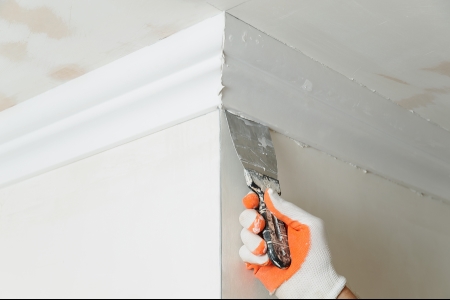Free Bay Area delivery on orders over $275. Orders will ship next business day. View Shipping/Return Policy.

DIY projects are appealing for many reasons. If you don’t mind getting your hands dirty, they can be cheaper and sometimes faster than the alternative—hiring a professional that leaves you at their whims regarding scheduling the project. However, trim or crown moulding mistakes aren’t uncommon when installing these as your DIY project. Suppose the installation process doesn’t go as planned. In that case, that DIY project can turn into a nightmare quickly, dissolving your ambition, wasting the money you’ve already spent, and forcing you to call a professional anyway
Whether you’ve installed plenty of moulding or trying it for the first time, you might encounter some common mistakes. Here, we at The Moulding Company will go over the three top moulding mistakes made when installing trim and moulding in your home to help you avoid them.
1. Improper Measurements
Think about ancient Greek society and the beautiful buildings we still have evidence of today. Could you imagine their splendor standing up to the test of time if the builders used lazy measurements? It might seem obvious that this can cause issues, but to some, having improper measurements of your moulding isn’t a big deal. But measuring carelessly can cause problems besides aesthetic appeal. You either leave gaps from pieces cut too short, or you can’t get the corners to look just right because somehow you got the angle and length wrong.
No one likes buying extra materials for their crown moulding mistakes, so it’s important to measure twice and cut once, as the saying goes. Doing thorough research to ensure you know how to measure the pieces you need is paramount to success and the best way to avoid mistakes. Even with extreme care, however, accidents happen, and this brings us to our next point.
2. Damage from Installation
Damage can be an unfortunate part of any project, especially when chair rail, crown mouldings, or other types of trim are involved. With the nailing, gluing, cutting, and prying or banging that goes on during the installation of trim and moulding, it’s almost impossible to avoid damage when doing it yourself.
Whether it’s dents in your drywall, scratches on your paint, or gaps left between trim pieces, there are many opportunities for error and unsightly mistakes in a DIY project. You don’t want moulding on your walls, windows, and doors that appear shoddy and lazily completed.
Making sure to repair or cover those mishaps can make it like it never even happened, and people won’t doubt your ability to pull off an incredible do-it-yourself job. For instance, you may solve trim gaps by using small rosette blocks or smaller pieces of trim to fill the space seamlessly. Cover broken drywall with paneling (if that’s what you’re already installing) or trim, if possible. You may need to repair it if it’s too high up the wall or not part of your plan. Solve scratches in paint above where you’re installing trim with the application of more paint. The biggest challenge in this scenario is finding the exact color that matches your walls.
3. Not Sanding Edges
Another all-too-common mistake is not getting smooth edges on your pieces of trim. It’s easy to overlook or forget the process of sanding the edges of each piece of trim because the edges can look smooth or be the last concern. If you don’t sand them, they can refuse to line up correctly or leave tiny gaps between pieces—small, but hugely noticeable. Especially if the moulding you choose for your home is purely decorative, you want it to fit flush against the walls to maximize its appeal in the space.
Sanding the trim ends can make them go together seamlessly and smoothly, stay aligned, and improve any adhesive hold. This attention to the edges will give your finished project a more professional, appealing look, which is especially important with modern, popular types of room decor.
Hire A Professional
While these are three of the most common mistakes when completing a moulding or trim job in your home, they aren’t the only mistakes you might make during your DIY project. There’s a surefire way to prevent yourself from making them, however. If you aren’t experienced with do-it-yourself projects or don’t know where to begin installing trim, hire a professional.
A professional has the experience, training, expertise, and boundless knowledge on your trim and moulding projects. Even if you don’t hire them to complete the job, many will offer you tips and advice or help walk you through how to do it. Most professionals are insured to cover any mistakes they might make, and if errors occur, they’ll pay for them with their money and time, not you. They’ll also know the best way to fix any issues that may arise, thanks to their experience.
The Moulding Company has an entire team of experts on moulding and trim, and we can help you decide if you’re up to the job or if you need some help. Call us today for help with your trim project and avoid trim or crown moulding mistakes!

